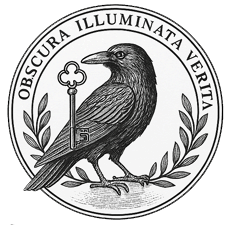The Code Beneath the Floorboards

This rare and highly stylised photograph captures Octavius Wren and Horace Melville, two founding figures of StormCroft House, in the midst of encoding a message using what would later be known as the Somerset Key. The lighting — stark and theatrical — is thought to have been intentional, obscuring the surrounding environment to prevent documentation of the ciphering apparatus.
The pair, both listed publicly as philosophical naturalists, were secretly tasked with concealing early Fog Transport schematics from unauthorised staff. The original print was discovered in a lead-sealed drawer within the east wing’s sublibrary, marked only with the phrase: “For field eyes. Not to be copied.”
Every detail, from the worn ledger to the peculiar table markings, has since been catalogued and partially decoded — but much about this photograph, like the men themselves, remains elusive. 🔐 Use the Cipher Tool
StormCroft Editorial No. 04 • Filed 14 February 2024 • Written by Elias Horne
It was meant to be discarded. The archive log listed it as a “miscellaneous ledger, likely financial, 1870s.” In reality, it was neither ledger nor harmless — and not nearly as forgotten as officials might prefer. The object in question was a sealed manuscript, recovered from beneath a floorboard in Langport’s condemned Weighhouse Office during a long-delayed structural survey.
Bound in scuffed red leather and marked only with the initials “M.H.”, the contents of the book were gibberish to most eyes: lines of strange symbols, unintelligible columns, cryptic diagrams of railways that never existed. But to those who’ve followed the StormCroft trail long enough, this was no gibberish — it was a cipher. Not just a code, but a key. And not one invented for convenience, but survival.
The Somerset Key
Developed in the mid-1870s by StormCroft’s inner circle — most likely Octavius Wren and Horace Melville — the Somerset Key was an internal encryption protocol designed to obscure transmissions related to the early Fog Transport experiments. The cipher was not used for communication with the outside world. It was used to hide things internally, even from other departments.
Glyph-based and timetabling-inspired, the key transforms ordinary words into sequences that mimic phonetic delay, station signal interruptions, and false time-encoding. Think of it as Morse code if Morse had been deeply paranoid and obsessed with ghosts.
“There are words we cannot speak. But there are patterns that will remember us.”
– Margin note in original manuscript, author unknown
Why Hide a Cipher?
The Somerset Key wasn’t just used to encode messages — it was used to protect them from recording. Messages passed through voice, footstep rhythm, and even whistle tone. Some believe parts of the StormCroft facility were designed to respond to these glyphs. There are rooms with markings that match entries in the manuscript. Doors that opened with no key. Systems with no documented wiring.
So why bury it? Perhaps it was dangerous. Perhaps only a few were allowed to know how the system worked — and those few never lived long enough to speak freely. Or perhaps it was never meant to be buried at all.
You Can Use It Now
For the first time since its creation, a functioning recreation of the Somerset Key engine is now available to the public. It uses the same principles recovered from the manuscript and allows you to encode and decode messages just as the original architects may have done.
Whether it’s just for curiosity, storytelling, or something more… the key is now yours to hold. But remember: some doors open in both directions.
